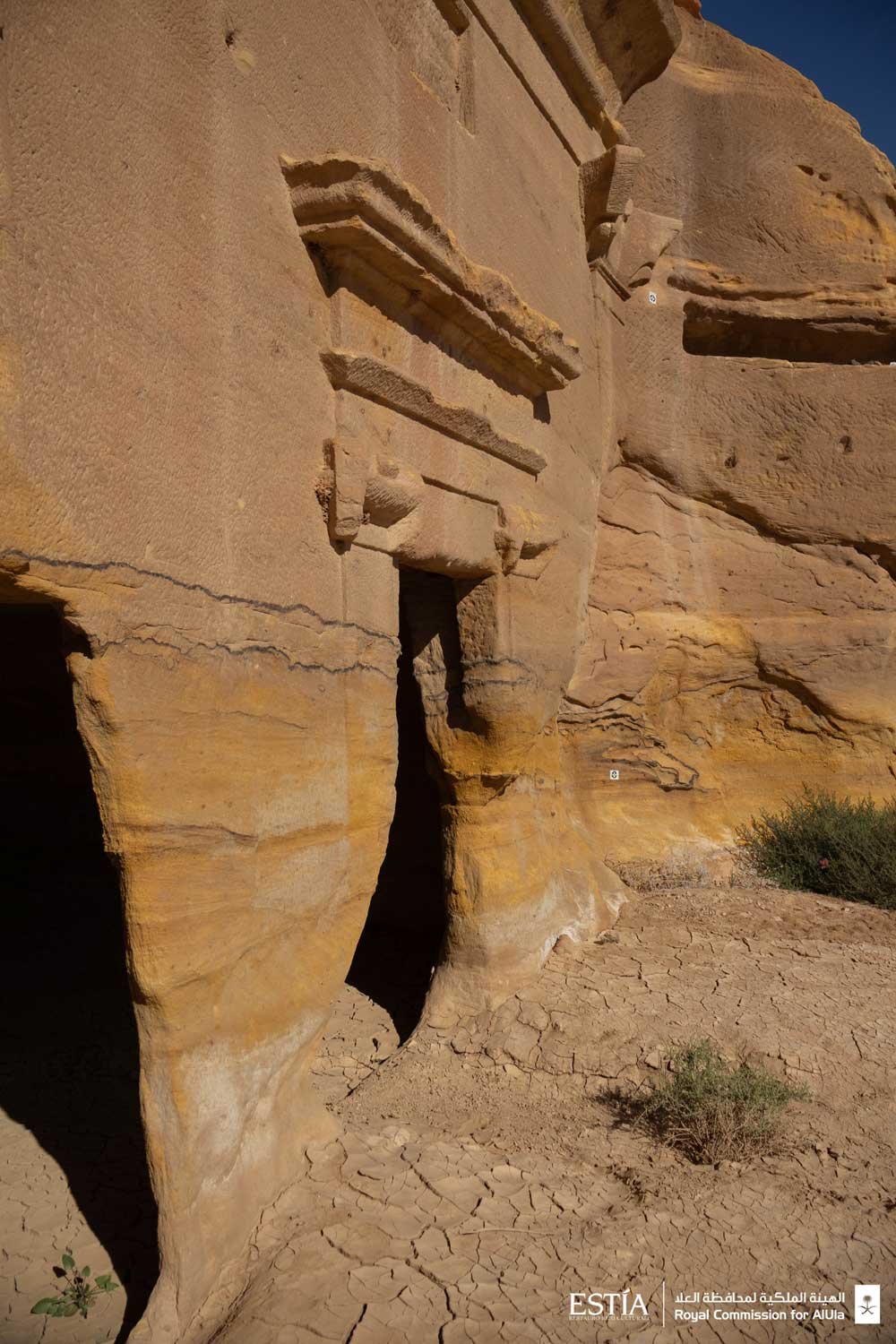
Tomb IGN53 is part of the Jabal Khuraymat necropolis, located in sector I on the eastern side of an isolated massif to the northeast of the necropolis. Its facade faces southeast, with the rockface representing the highest portion of the massif, about 8-10 meters high. The facade features two half-crowsteps composed of five steps each, resting on an Egyptian entablature consisting of a cornice with torus molding and an architrave. Two angular pilasters are topped by single-register Nabataean Corinthian capitals.
The entrance is framed by a Greco-Roman entablature with a series of moldings, including a sima molding, frieze, and architrave. The pilasters supporting the entablature are characterized by pseudo-Ionic Nabataean capitals. The lower part of the facade is heavily affected by capillary rising damp, with erosion evident up to about 1.5 meters from the ground. The rock wall housing the tomb displays horizontal stratifications and dark veins, particularly in the lower half.

Les tombeaux nabatéens de Hegra vol. II, Nehmé L., Académie des inscriptions et belles-lettres, Paris 2015, pp. 103-104
The rectangular recess below the architrave, likely intended for a cartouche plaque, shows traces of rough workmanship executed with a point chisel.
The interior of the burial chamber features five deep pit tombs located within rectangular niches—two on the left wall and three on the back wall. The underside of the door opening has two rectangular recesses on the sides of the upper side and another at mid-height on the left side.